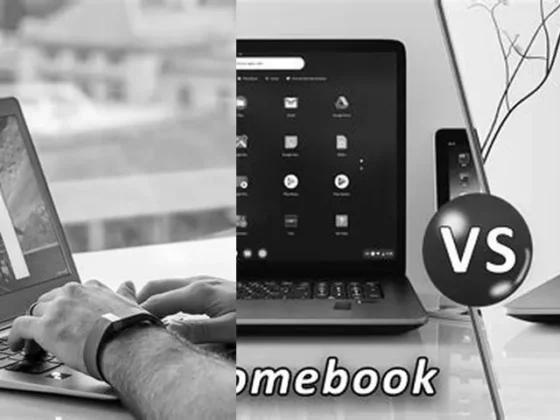How Can I Download a Windows Emulator on My Chromebook and Unlock Limitless Possibilities?: Are you a Chromebook user who’s longing to experience the power of Windows? Look no further! In this blog post, we’ll show you how to download a Windows emulator on your Chromebook and unlock a whole new world of possibilities. Whether you’re a student, professional, or simply someone who wants to explore the vast Windows ecosystem, we’ve got you covered. So, get ready to embrace the best of both worlds as we dive into the exciting realm of Windows emulators on Chromebook. Let’s get started!
Embracing the Power of Windows on Chromebook
The Chromebook, known for its simplicity and cloud-based efficiency, has won the hearts of students and professionals alike. However, there are moments when the reliance on Windows applications becomes inevitable. This is where Windows emulators come into play, transforming your Chromebook into a versatile machine capable of running the cherished Windows environment.
Getting Started with Windows Emulators on Chromebook
Before diving into the steps to download and install a Windows emulator, it’s essential to understand the prerequisites. Your Chromebook should support the Google Play Store as it serves as the gateway to downloading necessary applications like Crossover.
Activating Google Play Store on Chromebook
- Go to Personal Profile Images > Settings > Menu > Google Play Store.
- If the Google Play Store is not activated, click the Activate option.
With the Play Store active, you’re set to explore the world of emulators.
Downloading Crossover from the Google Play Store
Once the Play Store is up and running:
- Open the Play Store on your Chromebook.
- Search for Crossover and proceed to download it.
This app is a popular choice for running Windows software on Chromebooks and other devices with Android OS.
Installing a Windows Emulator with Parallels Desktop
For those seeking an experience closer to a native Windows environment, Parallels Desktop for Chromebook is an excellent option. This program allows you to run a full-fledged Windows operating system alongside Chrome OS.
Initial Setup with Parallels Desktop
- Sign in to your Chromebook using your system administrator account.
- Click on the Launcher to open your app drawer.
- Find and click on Parallels Desktop to initiate the setup process.
- When the Set up Parallels Desktop on your Chromebook dialog window opens, click Install.
- Wait for the Parallels Desktop Windows image to download and follow the on-screen instructions to complete the installation.
After installation, you can enjoy the seamless integration of Windows applications on your Chromebook.
Running Android Apps with Emulators
The versatility of Chromebook extends to running Android applications. Emulators like Android Studio and ARChon enable Chromebook users to run Android APKs tailored for ChromeOS, enhancing the device’s functionality.
Android Studio and ARChon Emulators
Android Studio is the official IDE for Android development and comes with a built-in emulator to test applications. ARChon, on the other hand, allows you to run Android APKs directly in the Chrome browser. Both these tools provide unique capabilities for app development and usage on Chromebook.
Downloading and Running Windows EXE Files with Parallels Desktop
For those who require specific Windows applications, Parallels Desktop offers a straightforward method.
Setting Up Windows Virtual Machine
- First, ensure that you have Parallels Desktop for ChromeOS installed.
- Download the Windows Disc Image (.exe file) from a trusted source.
- Create a new Windows Virtual Machine within Parallels Desktop.
- Start Parallels Desktop and follow the setup wizard to install Windows.
- Once Windows is installed, install “Parallels Tools” to integrate a set of Windows drivers for optimal performance.
- Finally, you can open any .exe file within the Windows environment on your Chromebook.
This approach gives you the freedom to utilize Windows-exclusive software directly on your Chromebook.
Maximizing Productivity with Windows Emulators
Adopting Windows emulators opens a plethora of opportunities for Chromebook users. Whether it’s for compatibility with school software, business applications, or gaming, the ability to run Windows on a Chromebook bridges the gap between two powerful operating systems.
Enhancing Chromebook Capabilities
With the integration of Windows emulators, Chromebooks become more versatile than ever. Professionals can access industry-specific software, students can use educational programs, and developers can test their applications in a Windows environment without leaving their Chrome OS.
Final Thoughts
Knowing how to install and run a Windows emulator on a Chromebook is a skill that significantly expands the device’s functionality. Whether you opt for Crossover for compatibility or Parallels Desktop for a full Windows experience, the process is straightforward and unlocks a new realm of possibilities. Embrace the power of Windows on your Chromebook and make the most out of your device.
Remember, while Chromebooks are not inherently designed for Windows, emulators provide a bridge that leverages the strengths of both operating systems. With the right preparation and understanding of these tools, your Chromebook can serve as a versatile workstation for all your computing needs.
FAQ & Related Questions about How Do I Download Windows Emulator On My Chromebook?
Q: How can I download a Windows emulator on my Chromebook?
A: To download a Windows emulator on your Chromebook, follow these steps:
1. Go to Personal Profile Images > Settings > Menu > Google Play Store.
2. Click the Activate option if it is not activated.
3. Open the Play Store on your Chromebook.
4. Download Crossover from the Google Play Store.
Q: How do I install a Windows emulator on my Chromebook?
A: To install a Windows emulator on your Chromebook, follow these steps:
1. Use your system administrator to sign in to your Chromebook.
2. Click Launcher to open.
3. Navigate to Parallels Desktop and click.
Q: What are the steps to enable Developer Mode on a Chromebook?
A: To enable Developer Mode on your Chromebook, follow these steps:
1. Enable Developer Mode.
2. Create a Bootable USB Drive or SD Card.
3. Boot from the USB Drive or SD Card.
4. Install Windows 11.
Q: Can I download a Windows emulator from the Google Play Store?
A: Yes, you can download a Windows emulator called Crossover from the Google Play Store on your Chromebook.
Q: Do I need to activate the Google Play Store before downloading a Windows emulator on my Chromebook?
A: Yes, you need to activate the Google Play Store on your Chromebook before downloading a Windows emulator. You can do this by going to Personal Profile Images > Settings > Menu > Google Play Store and clicking the Activate option if it is not already activated.


